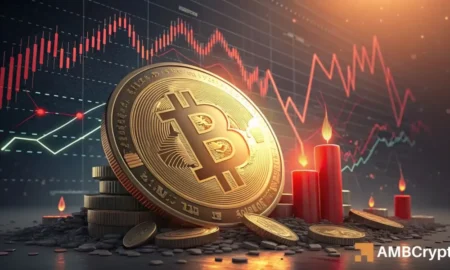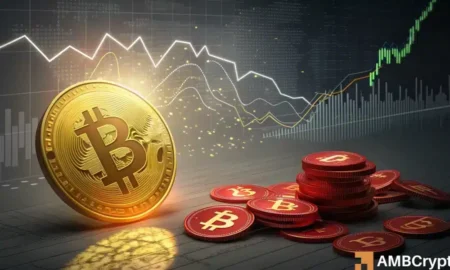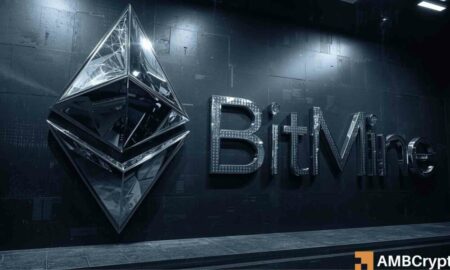BitMine’s Bold Ethereum Strategy: Insights into the Future of ETH
In recent developments, BitMine Immersion (NYSE: BMNR) has made headlines by significantly increasing its Ethereum (ETH) holdings, now amounting to an impressive $13.2 billion. The company’s strategy has sparked interest within the investment community, especially in the context of emerging technologies like artificial intelligence (AI) and ongoing institutional demand. This article aims to unpack BitMine’s strategic pivot toward Ethereum, the implications for its price trajectory, and the broader market dynamics influencing this critical cryptocurrency.
BitMine’s Strategic Investment in Ethereum
On October 6th, BitMine announced that it now holds 2.83 million Ethereum tokens, alongside a modest 192 Bitcoin and $456 million in cash reserves. This shift not only positions BitMine as the second-largest corporate crypto treasury, second only to Michael Saylor’s holdings, but it also represents a strategic bet on ETH as a leading asset class. Tom Lee, Fundstrat’s Chief Investment Officer and BitMine’s chairman, has dubbed Ethereum the "biggest macro trade of the decade." This assertion is rooted in the speculation that AI advancements and increasing institutional interest will drive significant demand for the cryptocurrency.
Lee posits that Ethereum is currently undervalued relative to its potential future returns. He aims to secure an ambitious 5% of the total ETH supply, which translates to approximately 6 million ETH tokens. This strategic accumulation underscores BitMine’s belief in Ethereum’s future, suggesting that they view the asset not only as a store of value but also as a crucial element in the evolving landscapes of technology and finance.
The Impact of ETH Accumulation on Price Dynamics
The aggressive accumulation of Ethereum has been described as "legendary" by industry leaders, including Bitwise CEO Hunter Horsley. Insider insights reveal that the overall ETH treasury holdings, including those in ETFs, have surged to 5.66 million ETH, valued at approximately $26.45 billion as of October. This growth of over $4 billion since Q2 is indicative of rising institutional adoption, even in a financial climate where traditional investments are becoming increasingly risky.
Despite a slight deceleration in U.S. Spot ETH ETF inflows in Q4, the integration of Ethereum into institutional portfolios promises to invigorate the wider market. The on-chain dynamics are also changing, as evidenced by a 20% drop in ETH reserves on exchanges, which fell from over 20 million ETH to approximately 16.1 million since July. This supply contraction could limit the potential for large-scale price corrections, giving bullish investors a sense of optimism as they navigate market conditions.
Navigating Market Resistance: The $5,000 Psychological Barrier
The current market for Ethereum shows signs of resilience, with the altcoin bouncing back 22% from a low of $3.8K in September. By successfully defending the $4.5K support level, ETH has piqued the interest of traders eyeing a potential retest of $4.8K, which could pave the way for an eventual surge to the psychologically significant $5,000 mark. However, market dynamics can shift rapidly, especially with large investors, or "whales," beginning to take profits. In fact, recent sell-offs have resulted in over $70 million in profits being booked from the recent recovery.
The On-Balance Volume (OBV) metric is currently positioned at a point of resistance, which raises concerns that the enthusiasm from buyers could be overshadowed by profit-taking actions among larger holders. These dynamics are crucial to monitor as they could either support or hinder further advancements toward the $5,000 milestone.
The Role of Staking and Exchange Reserves
The implementation of staking on the Grayscale Ethereum ETF may provide a significant boost to demand for Ethereum. As institutional players start to embrace staking, it could attract more capital back into the ETH market. Furthermore, once other issuers observe the positive effects of Grayscale’s staking initiative, we could see a ripple effect that attracts additional inflows into the market.
The declining exchange reserves of ETH and the accumulation by major corporations lead to theories that the overall supply of Ethereum is tightening, which could limit the potential for drastic downturns in price. Given that a scarcity of availability on exchanges generally leads to increased pricing pressure, this could support a bullish trajectory for the cryptocurrency in the coming months.
Looking Ahead: Ethereum’s Future Landscape
With BitMine doubling down on its Ethereum strategy in the context of rising AI and institutional interest, the future appears increasingly favorable for ETH. As the asset class garners more attention and a greater number of institutional treasuries engage with Ethereum, the stage is set for significant price movements. However, as always in the volatile crypto market, caution is advised.
The volatility of digital assets means that while the potential for upside is strong, bearish trends can occur suddenly and without warning. Market-watchers will need to keep a finger on the pulse of both macroeconomic indicators and specific cryptocurrency developments to navigate this evolving landscape successfully.
Conclusion: The Bullish Case for Ethereum
In summary, BitMine’s aggressive accumulation strategy presents a compelling case for Ethereum’s potential growth. Tom Lee’s confident stance on ETH as a transformative asset in the age of AI further bolsters the narrative surrounding the cryptocurrency. While the outlook shows significant promise, careful monitoring of market conditions, whale behavior, and institutional movements will be essential for investors seeking to leverage the full potential of Ethereum. As we advance into a new era of financial technology, Ethereum may very well be at the forefront of that revolution, offering unique opportunities for those willing to engage with its multifaceted advantages.
















